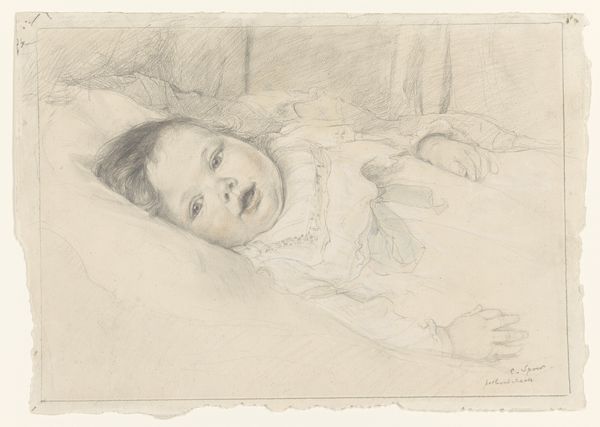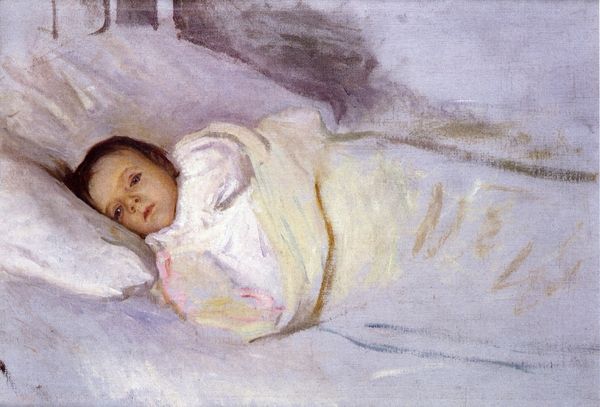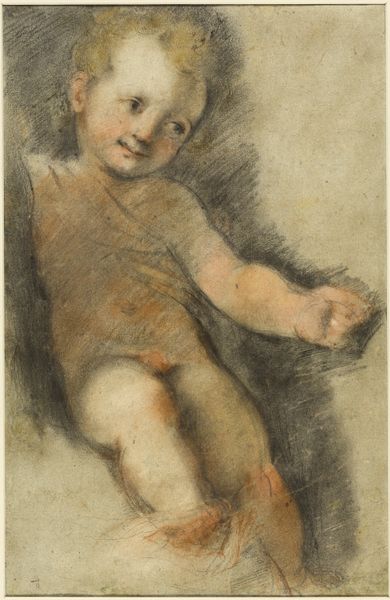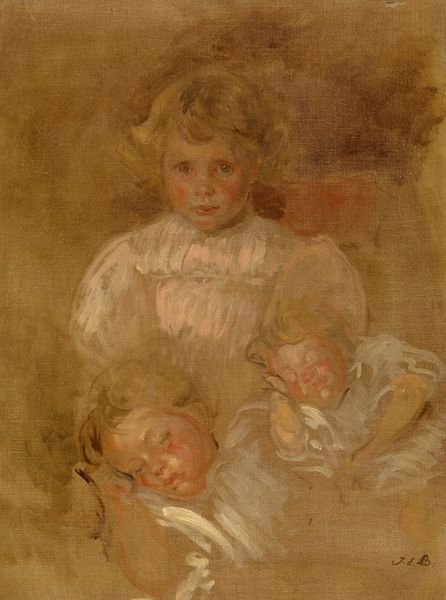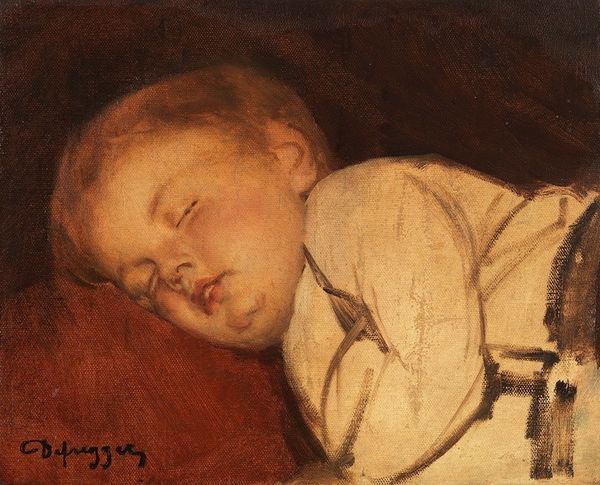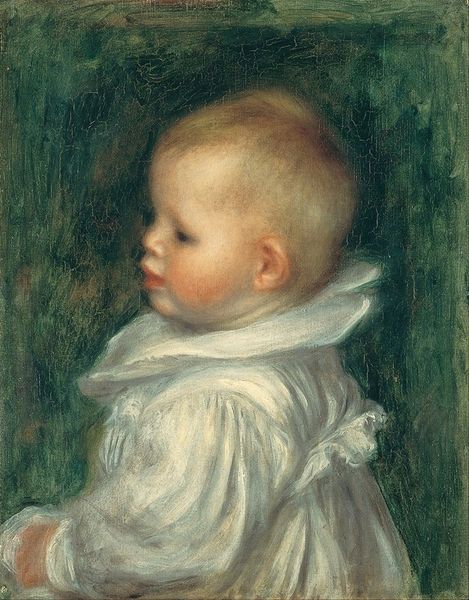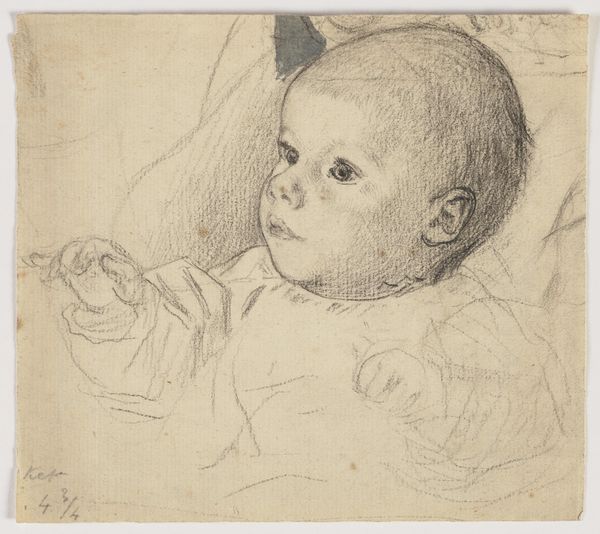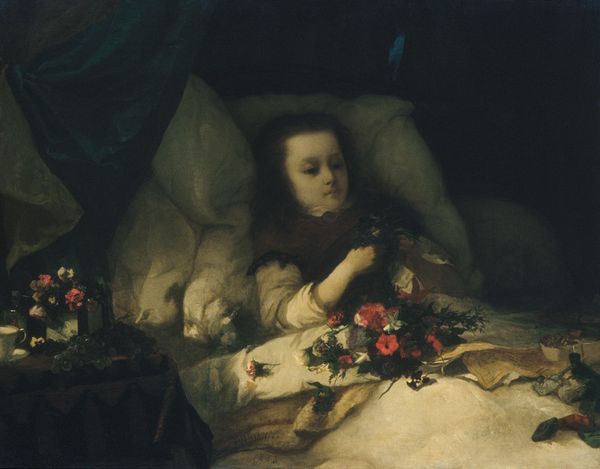
Copyright: Public domain
Editor: So here we have Eliseu Visconti’s "My Child Tobias at Six Months," painted in 1910. It’s an intimate, soft-focus painting, and it captures the tender innocence of infancy. How do you interpret this work, considering the historical context of portraiture? Curator: This is a lovely example of genre painting filtered through the lens of early 20th-century intimacy. It reflects a growing trend, influenced by evolving concepts of domesticity and motherhood. The soft, impressionistic brushstrokes evoke a feeling, but it also speaks to class dynamics. Visconti depicts a child in apparent comfort and safety. Do you think this reflects a universal experience? Editor: I think that's a really interesting point. Considering Visconti was from Brazil, how do race and colonialism intersect with the representation of domestic life here? Is it a portrait of bourgeois domesticity that is silent on how privilege affects it? Curator: Precisely! While appearing sentimental and innocent, the painting is imbued with social and political contexts often unseen. Whose children are given such tender portrayals, and whose childhoods are rendered invisible? Thinking about the painting this way helps us examine what stories are told, and more importantly, what stories are actively suppressed. Editor: That reframes the painting in such a powerful way. I appreciate how it highlights both the artistry and its possible social critiques. Curator: Exactly. Seeing a painting like this invites us to think about the visual narratives we consume daily and the power structures they uphold, and conversely, subvert. Editor: Thanks! I'll remember to look beyond the surface of idyllic images to examine the broader societal influences behind their creation and reception.
Comments
No comments
Be the first to comment and join the conversation on the ultimate creative platform.



